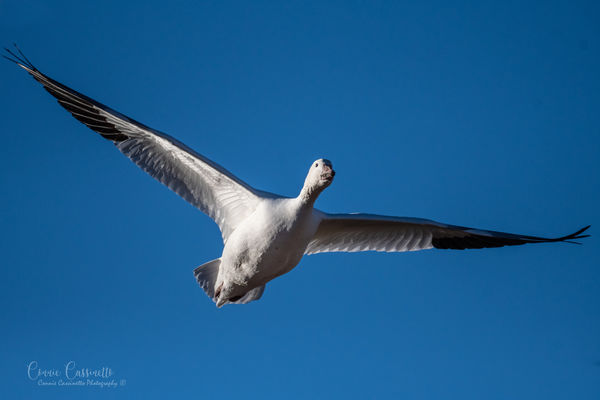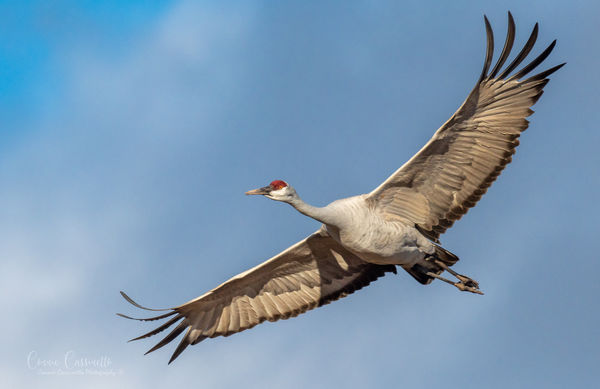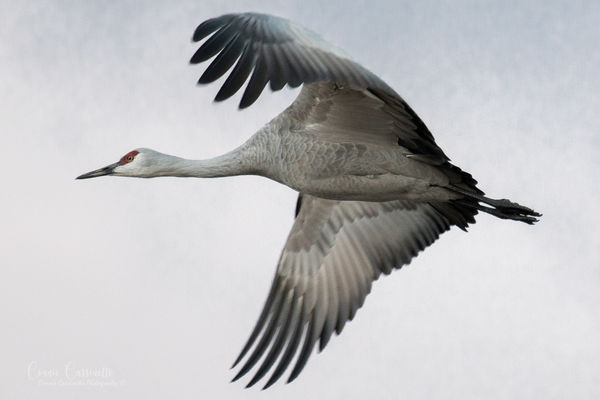Birds in flight
Aug 29, 2020 11:05:56 #
In trying to shoot a Red-tailed hawk or vulture I can not get the underside of the bird’s colors. The head is focused and wing span ok but again underside is usually dark and lacking detail. Suggestions for adjustments to settings. My shutter is usually around around 1/2000 to 1/2500. I have a 300mm lens
Aug 29, 2020 11:11:18 #
Aug 29, 2020 11:23:30 #
SENG wrote:
In trying to shoot a Red-tailed hawk or vulture I can not get the underside of the bird’s colors. The head is focused and wing span ok but again underside is usually dark and lacking detail. Suggestions for adjustments to settings. My shutter is usually around around 1/2000 to 1/2500. I have a 300mm lens
Equipment is not your problem. You are trying to defy physics. The underside of any bird in flight is heavily shaded, normally. Looking outside the box tells you to find another way to get the breast sunlit. The easiest way to do that is find the bird perched somewhere. This won't get the underside of the wings, but that is very difficult to do. Finding your target bird perched will be a challenge. Good luck.
Aug 29, 2020 11:35:39 #
You need to dial up some exposure compensation. Add a stop or two. The bright sky is dominating the scene.
Aug 29, 2020 11:40:40 #
"...Handle it in Post processing. Shoot raw..." SOP by Fotoartist
That said you are shooting with a Nikon D500 which doesn't have outstanding dynamic range...
In fact it is the only camera I ever sent back to B&H owing to it's miserable image quality compared to my D7200 and D810. While the D500 has fabulous AF and an exceptional frame rate it's DxO mark Score quickly shows it's not capable of high dynamic range...
https://www.dxomark.com/Cameras/Compare/Side-by-side/Nikon-D500-versus-Nikon-D810___1061_963
I decided on a Nikon D810 instead since it's dynamic range score was a HUGE advantage...
Nikon D500 = 1380 verses Nikon D810 = 2853
No contest...
Hope this helps...
All the best on your journey SENG
That said you are shooting with a Nikon D500 which doesn't have outstanding dynamic range...
In fact it is the only camera I ever sent back to B&H owing to it's miserable image quality compared to my D7200 and D810. While the D500 has fabulous AF and an exceptional frame rate it's DxO mark Score quickly shows it's not capable of high dynamic range...
https://www.dxomark.com/Cameras/Compare/Side-by-side/Nikon-D500-versus-Nikon-D810___1061_963
I decided on a Nikon D810 instead since it's dynamic range score was a HUGE advantage...
Nikon D500 = 1380 verses Nikon D810 = 2853
No contest...
Hope this helps...
All the best on your journey SENG
Aug 29, 2020 12:51:14 #
Aug 29, 2020 12:51:43 #
SENG wrote:
In trying to shoot a Red-tailed hawk or vulture I can not get the underside of the bird’s colors. The head is focused and wing span ok but again underside is usually dark and lacking detail. Suggestions for adjustments to settings. My shutter is usually around around 1/2000 to 1/2500. I have a 300mm lens
Shoot on a full frame camera at LOW ISO and overexpose SLIGHTLY.....dial in + EC or shoot fully manual....lighten in post ...shoot raw if you dare.
.
Aug 29, 2020 13:34:19 #
On my Canon I try and use the dynamic(iso 200) to get detail under the body and wings. Keep on shooting!
Aug 29, 2020 15:04:42 #
SENG wrote:
In trying to shoot a Red-tailed hawk or vulture I can not get the underside of the bird’s colors. The head is focused and wing span ok but again underside is usually dark and lacking detail. Suggestions for adjustments to settings. My shutter is usually around around 1/2000 to 1/2500. I have a 300mm lens
Hi. I have about 1800 decent bird shots, in flight and otherwise and many of them include the underside of the bird and show fine detail. I use a D500 (and I do agree with the person who said the low light ability on the D500 is not good), and a Nikon 200-500 or Nikon 500PF lens. Shutter speed is about getting the bird in focus, your problem is incorrect exposure and most likely expecting too much in adverse situations. You need to learn about light and how it hits the animal. It is, in many cases, "all about the light." Aperture does affect your exposure and you don't state what aperture you normally use. A full frame camera has a sensor that captures light better so you might use that if you have one. I normally set my aperture to f/5.6, which allows for good focus and lets in a good degree of light. Put your focus point on the bird and use plus exposure compensation if needed, correct the sky in post. Photography is about making choices and that includes in exposure settings. I can post some of my shots in your link if you want to see them.
Aug 29, 2020 16:49:32 #
Thank you for help. I would certainly like to see some of your photos. I will only view them and nothing else.
SENG
SENG
Aug 29, 2020 16:53:49 #
imagemeister wrote:
Shoot on a full frame camera at LOW ISO and overexpose SLIGHTLY.....dial in + EC or shoot fully manual....lighten in post ...shoot raw if you dare.
.
.
Are you heavily cropping ?? - ALSO ?
Aug 29, 2020 18:51:54 #
SENG wrote:
Thank you for help. I would certainly like to see some of your photos. I will only view them and nothing else.
SENG
SENG
Bird in flight photography is difficult for many reasons. Oftentimes you will need to lift shadows and do some other things in post to get the image the way you want. If you shoot JPEG this may be more difficult as the file will not allow as much processing as a RAW file will; the JPEG is already processed in camera but you can lighten it or lift shadows to some degree, but not like you can in a RAW file. I've used sandhill cranes and a duck as an example, since it seems I get a lot more underside shots of them, to show you that it can be done, but it does take practice, both in shooting and in processing. Pay attention to the light next time you are out photographing birds and position yourself in the best place possible to get the light on the bird. Focus/expose directly on the bird. You can work with the sky a bit in processing, but again, RAW works much better for this type of photography. In a perfect setting a JPEG is fine, but all too often in wildlife "perfect" is not to be found.



Aug 29, 2020 18:53:35 #
Post an example so we all can see your results, be sure to store the JPEG file.

Aug 29, 2020 18:57:47 #
CHG_CANON wrote:
Post an example so we all can see your results, be sure to store the JPEG file.
I don't think I want to do that, just wanted the OP to see that it can be done. Thanks for your advice anyway.
Aug 29, 2020 19:00:27 #
via the lens wrote:
I don't think I want to do that, just wanted the OP to see that it can be done. Thanks for your advice anyway.
I'm not responding to help you. The OP asked for help by describing their problem, where it will be both more effective and efficient to see their images, rather than someone else's images, to provide actionable feedback specific to their camera, lens and shooting situation.
If you want to reply, then register here. Registration is free and your account is created instantly, so you can post right away.







